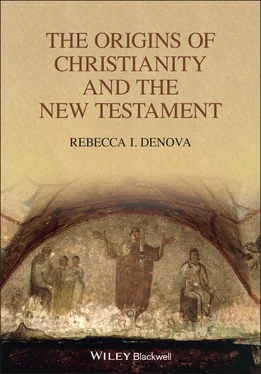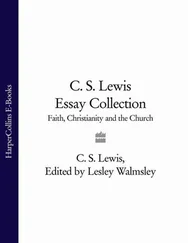As we will see, each of the four gospels has a defined historical context. As events and issues in the communities of his followers changed over time, their “story” of Jesus changed as well.
There is probably no other element that motivates newer approaches to the study of Jesus more than the rediscovery of “Jesus the Jew” that occurred in the past 100 years or so. We say “rediscovery,” because everyone in the first century knew this. The ethnic and religious background of Jesus became buried in the centuries of Christian tradition and teaching. The rediscovery has resulted in a newfound importance for understanding Jews and Judaism in the time of Jesus. This period was known for the emergence of various sects of Jews. What kind of Jew was Jesus?
At the same time, “Jesus the Jew” remains the focus of post-Holocaust studies. A central tenet of Christianity is found in Mark’s story of the trial and crucifixion of Jesus. The origins of centuries of Christian anti-Semitism began with this story (blaming the Jews for the crucifixion), and it still resonates in the modern world.
The purpose of this book is to introduce lay readers (whether Christians or participants in other religious and nonreligious systems) to the origins of the movement that became Christianity. It can also serve as a secondary text for academic courses in the origins of Christianity. The study of “origins” is crucially important, not only to study the past, but to understand what gave rise to concepts and beliefs that remain a major aspect of our modern heritage. Many Christians learn the ritual formulas, but without the historical background of what gave rise to those formulas.
Although some Christians believe that Christianity was simply “revealed,” it did not arise in a vacuum. The immediate historical context is Second Temple Judaism (c. 450 bce – 70 ce) in the province of Judea in the Roman Empire with its cultural inclusion of Greco-Roman society. An exploration of the people and societies at that time elucidates the contribution of both in the origins of the movement .
The analysis of the ancient world relies on primary documents when available – the literature that was produced at the time. In the study of the origins of Christianity, the primary documents are what became the New Testament. The final version of the New Testament contains four gospels (Mark, Matthew, Luke, John), a history of the missions (the Acts of the Apostles), fourteen letters assigned to Paul, seven letters assigned to others, and one apocalyptic text known as the Book of Revelation.
Scholars debate the dates of some of the texts (some in the second century), but they all demonstrate teachings of various communities in the first century. Learning to read these texts in relation to the people and the societies that produced them is the goal of this book.
The Academic Discipline of Religious Studies
Religious Studies is a relatively new discipline in the academy (in the past seventy years). It is important to recognize the differences between Theology (the study of God) and Religious Studies. Theology involves the study of the nature of God and the way in which God and humans interact. Theologians address such issues from a preconceived faith conviction. There are thousands of books and articles on the theological study of Jesus and the New Testament.
Religious Studies (often referred to as “the academic study of religion”) focuses on the origins of religious authority (institutions), beliefs, rituals, sacred texts, and ethics. Absent value judgments of which religions are “right” or “wrong,” Religious Studies analyzes the people and societies who created religious traditions and the way in which they function.
Religious Studies utilizes a “multidisciplinary” approach and methodology that incorporates all the liberal arts and social sciences: classics, history, literature, anthropology, archaeology, sociology, philosophy, and psychology. In addition, the study of religion analyzes economics, politics, ethnic studies, ritual, gender studies, the arts, global studies, and cross-cultural approaches. Religious Studies explores the human experience of religion in specific cultures over time, as a “system of meaning.” This is the approach that is utilized in the following chapters. Working in tandem, a Religious Studies approach also sheds light on theological issues.
Features of this Textbook
Chapter I summarizes the post-Enlightenment approach to the study of the Bible and the three phases of “The Quest for the Historical Jesus” in the last century. The chapter also includes shared terminology and methodology in the study of ancient religions. Modern criteria for uncovering the “historical Jesus” are outlined in the first chapter.
Chapter II, “The History of Israel,” is a short history of Jews and Judaism, as revealed in the Jewish Scriptures. This history is crucial for positioning Jesus as a Jew in the first century. The gospels consistently call upon this history to frame the teachings of Jesus. Israel underwent a major paradigm shift after the conquests of Alexander the Great (330 bce). The cultural changes in this period are collectively known as “Hellenism” (after Hellas, the eponymous founder of Greece). These cultural elements are also incorporated into the New Testament.
The earliest texts of the New Testament are Paul’s letters, which were written in the 50s and 60s of the first century. Chronologically they should be placed prior to the gospels. However, most readers prefer to cover the story of Jesus in the gospels first; Paul provides very little information about the ministry. The second reason to examine Paul’s letters after the gospels is that he laid the groundwork for the later letters in the New Testament and what eventually became Christian dogma by the end of the first century.
After reviewing the history of Judaism up to the first century, Chapter III examines the first gospel in “The Gospel of Mark” (“The Apocalyptic Jesus”). We examine the way in which Mark structured his story in alignment with the Scriptures and the events of the Jewish Revolt (66–73 ce).
“The Gospel of Matthew” (The “New Moses”), Chapter IV, is perhaps the best-known of the gospels (particularly through the translation of the King James Bible in 1601). This chapter includes an exposition on the “nativity stories” of both Matthew and Luke (to avoid repetition later). Matthew also has the most “kingdom parables,” and we will examine these as they relate to Matthew’s portrait of Jesus.
Chapter V, “The Gospel of Luke” (“The Compassionate Jesus”), introduces the background of a two-volume work that is the longest document in the New Testament. It is also familiar for Luke’s unique parables (“The Good Samaritan” and “The Prodigal Son”). We explore the rationale for this opus and the unique ways in which Luke structured his story.
Chapter VI, “The Acts of the Apostles,” continues Luke’s story with this sequel to his gospel. Acts relates the progress of Christian missions as the message of Jesus was conveyed to the cities of the Eastern Roman Empire after his death.
The Stranger from Heaven, Chapter VII, differs significantly from the others in both style and structure. John’s preface is one of the most famous in the New Testament, coalescing the deification of Jesus that began shortly after his death. John’s gospel is the origin of the concept of “the Incarnation” of Jesus.
Chapter VIII, “Paul: Apostle to the Gentiles,” examines the way in which Paul contributed to Christian dogma with his arguments on how Christian believers could participate in “the Law of Moses,” and yet have a new identity. Often referred to as “the true founder of Christianity,” there are probably more books on Paul now than Jesus. One of the most complicated characters in the New Testament, Paul’s attitude toward Judaism continues to undergo modern analysis.
Читать дальше












